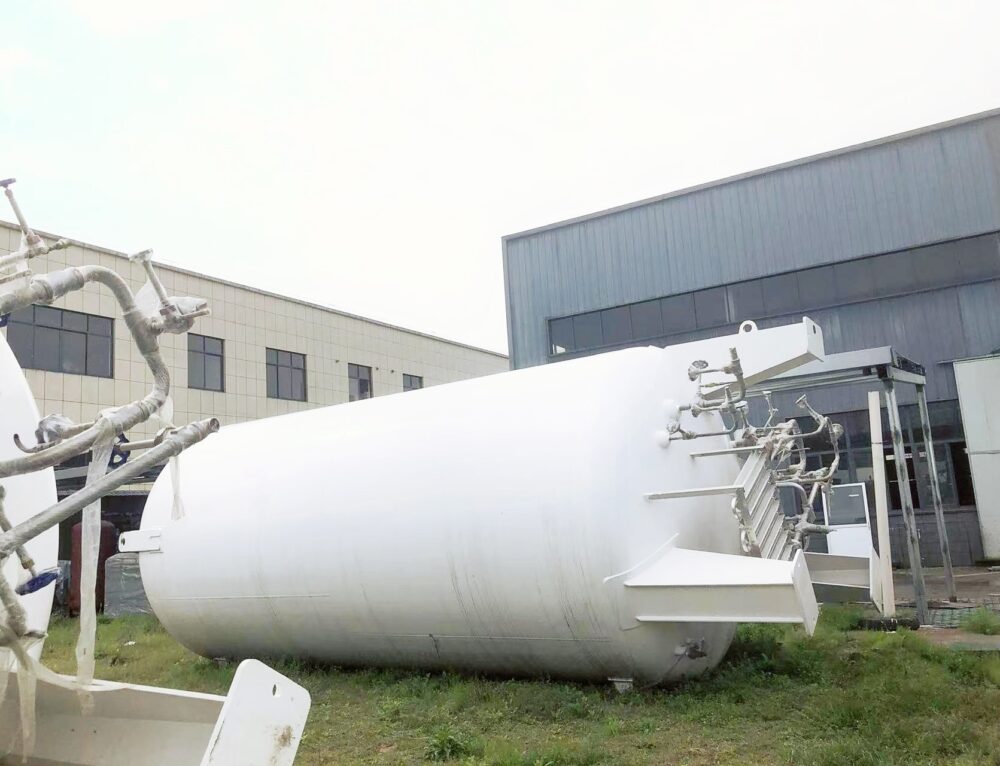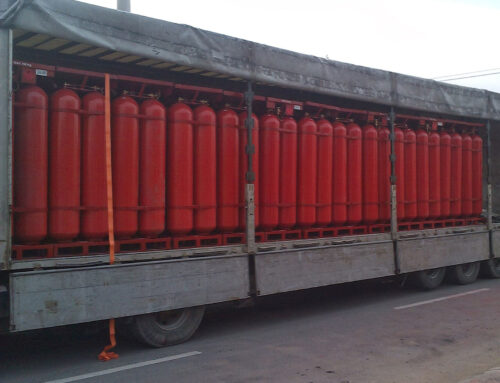Cryogenic transport tanks are vessels that are designed to store and transport cryogenic liquids or gases at very low temperatures. Cryogenic liquids, such as liquid nitrogen, helium, argon, and oxygen, have boiling points below -150°C, while cryogenic gases, such as liquefied natural gas (LNG) and nitrous oxide, have boiling points below -100°C.
Cryogenic transport tanks can be classified into two types based on their usage: stationary tanks and mobile tanks. Stationary tanks are used for storing cryogenic fluids in a fixed location, such as a cryogenic processing facility or a gas station. Mobile tanks are used for transporting cryogenic fluids from one place to another, such as from a production site to a customer site or from a storage site to a distribution site.
Stationary tanks and mobile tanks have different design and construction features to meet their specific requirements. Stationary tanks are usually larger in size and capacity than mobile tanks, and they have higher pressure ratings and lower heat losses. Stationary tanks are also equipped with various safety devices, such as pressure relief valves, rupture discs, and vacuum breakers, to prevent overpressure or vacuum conditions. Mobile tanks are smaller and lighter than stationary tanks, and they have lower pressure ratings and higher heat losses. Mobile tanks are also fitted with various accessories, such as wheels, trailers, hoses, pumps, and vaporizers, to facilitate their movement and operation.
Cryogenic transport tanks are made of materials that can withstand the extreme temperatures and pressures of cryogenic fluids. The most common materials used for cryogenic transport tanks are stainless steel and carbon steel with special coatings or treatments. The inner tank is usually made of stainless steel, which has good thermal conductivity and low thermal expansion. The outer tank is usually made of carbon steel, which has high strength and low cost. The space between the inner and outer tank is filled with insulation material, such as perlite or vacuum panels, to reduce heat transfer. The insulation material is also mixed with an adsorbent, such as activated carbon or silica gel, to maintain the vacuum level in the space.
Cryogenic transport tanks are widely used in various industries that require cryogenic fluids or gases for their processes or products. Some examples of these industries are:
– Medical: Cryogenic transport tanks are used for storing and transporting liquid nitrogen or liquid oxygen for medical applications, such as cryosurgery, cryotherapy, cryopreservation, and oxygen therapy.
– Food: Cryogenic transport tanks are used for storing and transporting liquid nitrogen or liquid carbon dioxide for food applications, such as freezing, chilling, packaging, and carbonation.
– Aerospace: Cryogenic transport tanks are used for storing and transporting liquid hydrogen or liquid oxygen for aerospace applications, such as rocket propulsion, fuel cells, and space exploration.
– Energy: Cryogenic transport tanks are used for storing and transporting liquefied natural gas (LNG) or liquefied petroleum gas (LPG) for energy applications, such as power generation, heating, cooling, and transportation.







